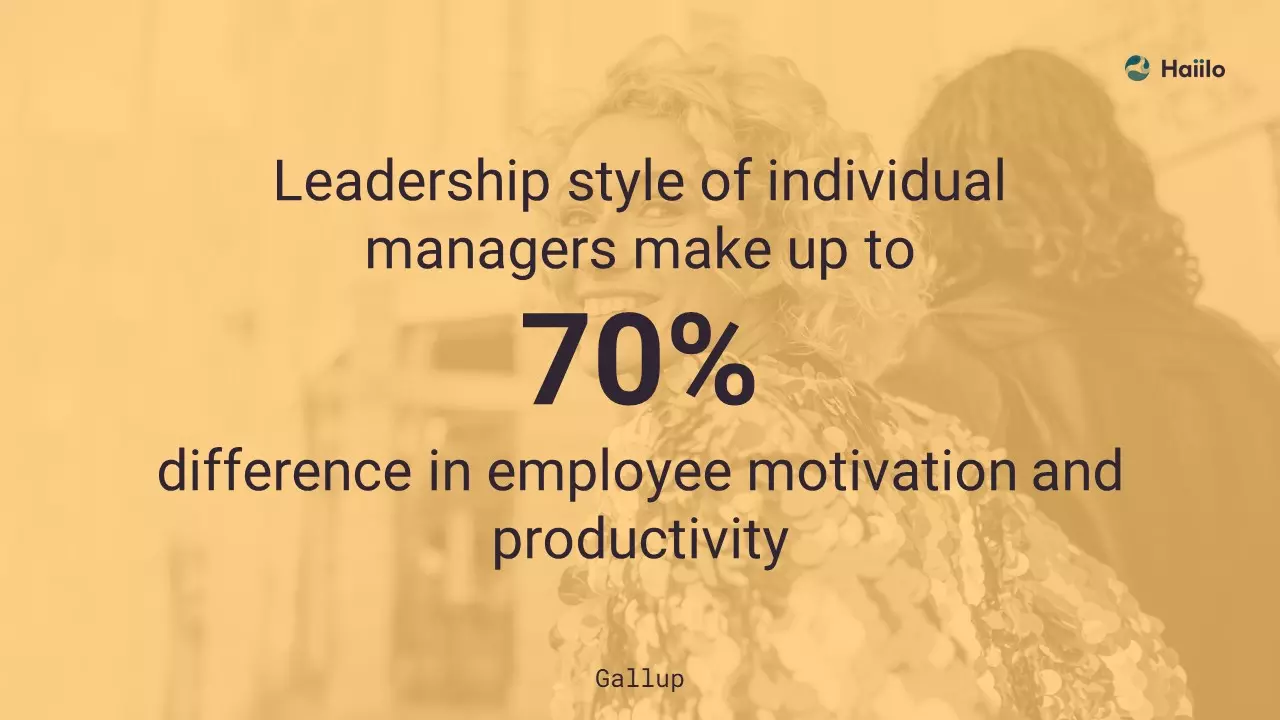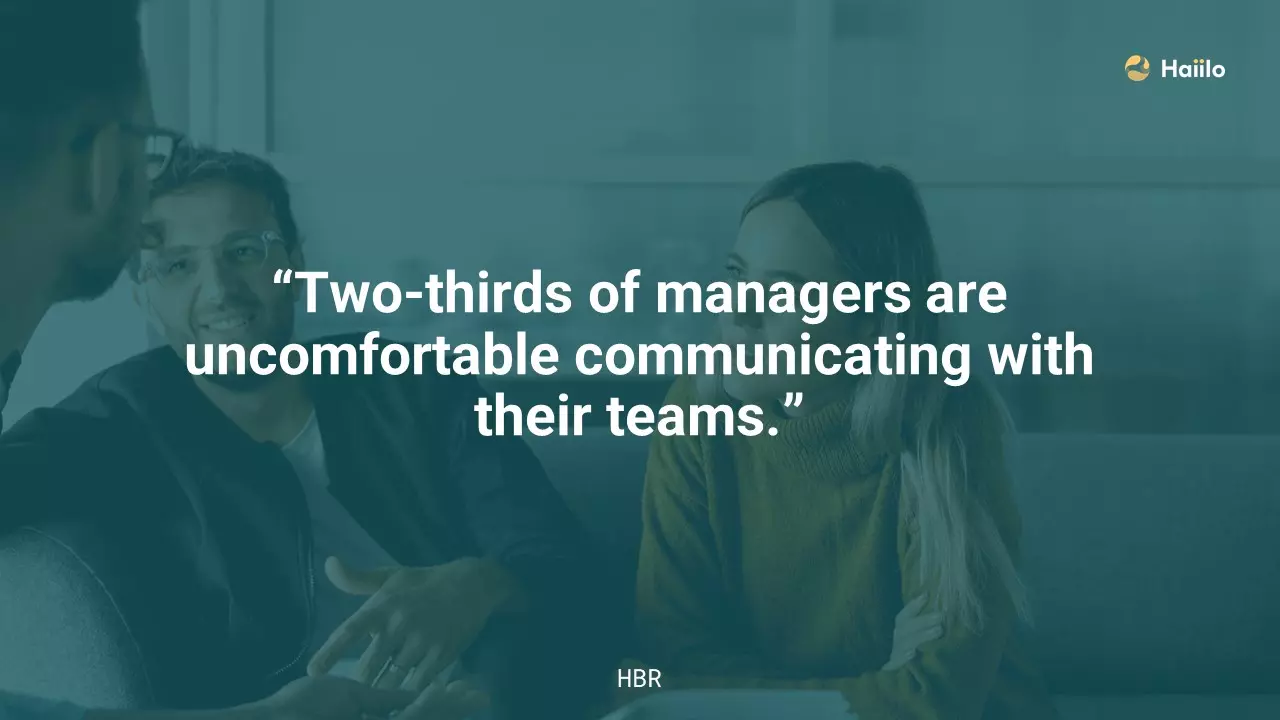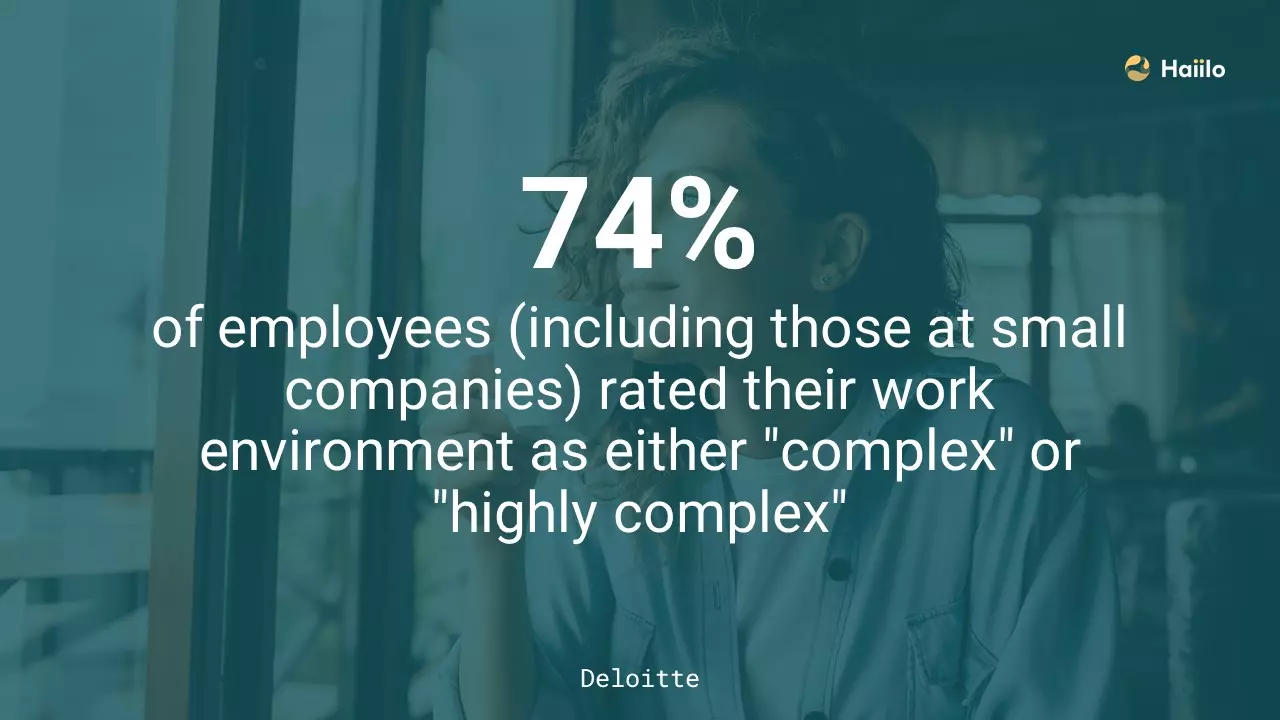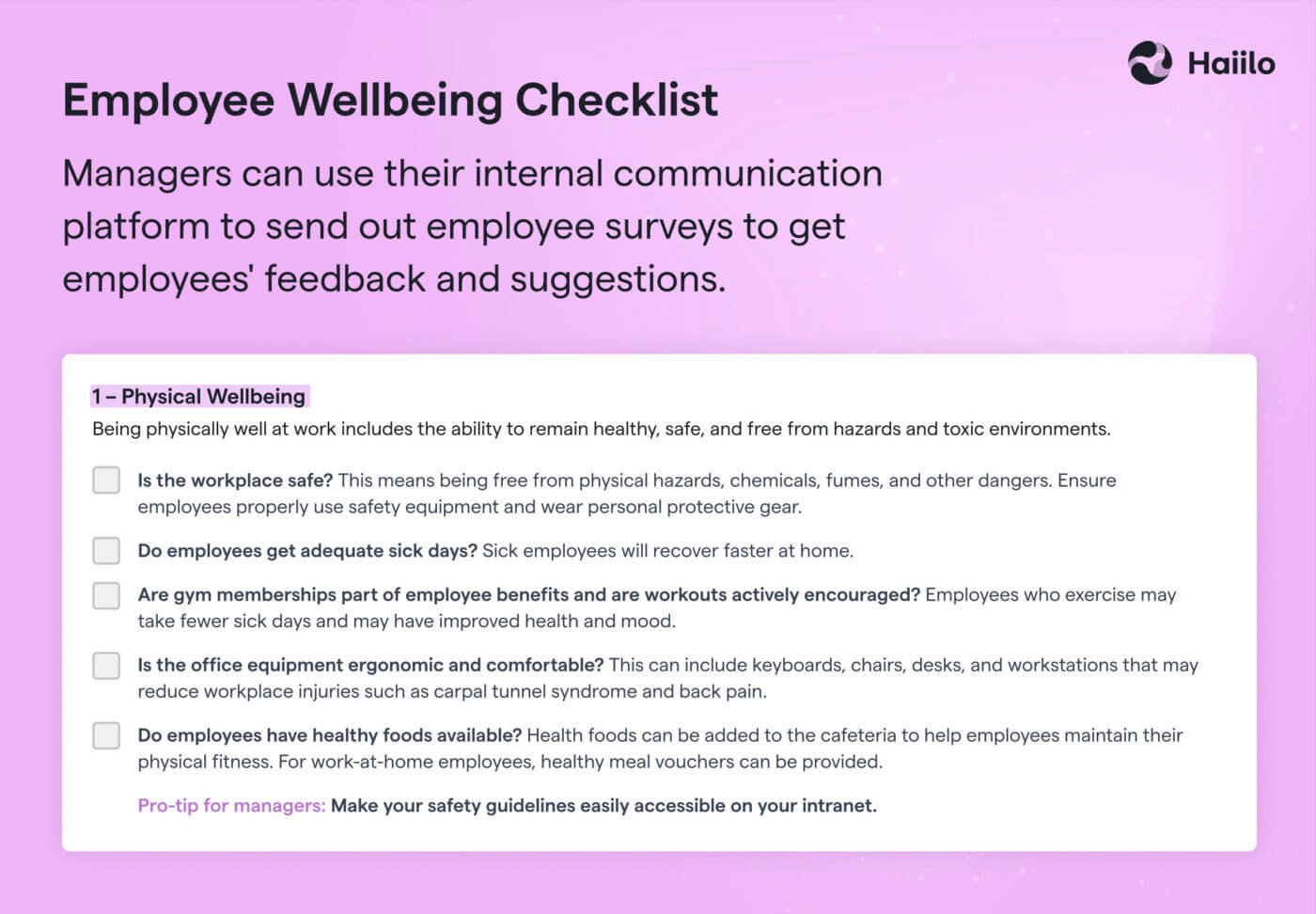Effective manager communication skills are crucial for employee motivation, engagement and productivity. Moreover, today’s managers need to understand the benefits of encouraging bottom-up feedback where employees feel free and empowered to give feedback to their leaders.
Manager Communication Drives Employee Success
Employee motivation, engagement and productivity highly depend on employees’ managers and leaders.
Moreover, leadership style of individual managers has a strong impact on workplace results, making up to 70% difference in employee motivation and productivity.

Moreover, millennials and gen Z, who make the majority of today’s workforce, now expect more responsive, open and appreciative company culture.
On the other side, 57% of employees report not having clear directions, and 69% of managers are not comfortable communicating with their employees in general.
It is more important now than ever to support open workplace communication, to keep staff involved, and to keep employees informed about the state of the organization and workplace changes.
Allow for two-way communication and enable your employees to give feedback with the right IC tools
Only when you manage to achieve such corporate culture, you can expect improved employee motivation, engagement and retention.
Moreover, 85% of employees said they’re most motivated when management and leadership offer regular updates on company news.

81% of employees say that they would rather choose a company that encourages open communication than a company that has good perks such as health plans, free food and gym memberships.
Effective Manager Communication Encourages Bottom-up Feedback
When we talk about giving feedback in the workplace, we mostly think of top-down feedback that goes from managers to their employees.
How about bottom-up feedback?
Feedback that goes from employees to their managers is as important as top-down feedback. However, many organizations are struggling to create such company culture.
This is not so surprising as managers themselves don’t feel comfortable giving feedback to their employees.

Moreover, 37% of the managers said that they’re uncomfortable having to give direct feedback about their employees’ performance if they think the employee might respond negatively to the feedback.
So how can we expect our employees to give reverse feedback?
It is the manager’s job to encourage employees to give feedback. Effective manager communication means that leaders know how to listen, sympathize, coach, and react. This means becoming a mentor and leader of people, more than a manager and commander.
More concretely, the manager’s role in a bottom-up feedback system is to:
- Implement new work processes influenced by employee feedback.
- Encourage employee opinions and know how to apply their insights.
- Communicate changes and reasons why they need to be made.
- Actively handle employee feedback so the staff knows if and when their contributions lead to results.
- Set-up and monitor feedback channels so they don’t become disruptive to the workplace.
- Recognize exemplary employees so they can be positive examples.
- Build a new company culture by accepting feedback and admitting mistakes.
How Managers Can Encourage Bottom-Up Feedback
Here are a few tips for creating a culture of bottom-up feedback in your company by improving manager communications.
1. Build trust
Trust is the foundation of any successful manager communication, and when it’s broken, it is extremely hard to repair.
Employees who don’t have trust in their managers are much less likely to speak up and give feedback to their bosses.
Therefore, one of the main goals for every manager should be to build trust among employees.
On the other side, the Edelman Trust Barometer showed in a survey of 33,000 individuals in 28 countries that almost 1 in 3 employees don’t trust their employers.
Therefore, if you want to increase the share of your employees’ voice, you first need to make sure that your own employees have trust in you.
2. Create a culture of bottom-up feedback
Embedding new employee behaviors is the hardest task managers have. However, it is the most important skill a manager can possess.
This is especially true during change management efforts within organizations. So if you want to build a culture of open feedback, you need to help your employees adopt new behaviors.
Encourage a new company culture in which accepting feedback, admitting mistakes, and growing from them is an everyday thing.
3. Accept criticism
Many employees don’t feel comfortable giving criticism to their boss, in fear that it will have a negative effect on their careers or the workplace atmosphere.
The best way to avoid this is by building trust and relationships in which employees really feel like they can give feedback to their leaders at any time.
It is extremely important not to underestimate how important the input of your employees is for your company. After all, a reliable source for understanding the needs and desires of your customers and stakeholders is to learn from those who work the most closely with them.
4. Be transparent and specific about your employees’ goals
Effective manager communication is the one in which managers communicate transparently and clearly to their employees.
When employees feel like their managers communicate goals and objectives in a clear and transparent way, they are also more likely to give bottom-up feedback.
However, 71% of employees believe that their leaders do not spend enough time communicating goals and plans. This is one of the causes for miscommunication and low employee engagement in the workplace.

Luckily, managers now have access to new internal communication technologies that can be used to increase transparency across their organization and encourage employees to join daily conversations.
5. Listen, listen and listen
Listening provides a space in which both people feel respected. Ideally, feedback is meant to help both sides understand the situation better.
Consider this HBR.org article by Jack Zenger and Joseph Folkman, which shared the results of a global study in which respondents were asked to rate their managers on the extent to which they “carefully listened to the other person’s point of view before giving them feedback.”
Respondents who rated their managers as highly effective at listening felt more positively about the manager’s ability to provide feedback.
The respondents who strongly disagreed with this statement rated their manager significantly lower on providing honest and straightforward feedback on a regular basis.
6. Be approachable
Manager whom employees see as unapproachable can never have effective workplace communication with their teams or expect high employee engagement levels.
Moreover, according to research, more than half of those surveyed who gave the “highest agreement rating” to the statement “I feel I can approach my manager with any type of question” are considered actively engaged in their work.
Good manager communications strategy is the one in which managers are available to give or receive feedback at any time.
If not, expecting feedback from employees is not realistic at all.
7. Show empathy
Showing empathy towards employees helps them be more open, respected and empowered, which can encourage your employees to feel more comfortable giving bottom-up feedback.
Moreover, 96% of employees believe showing empathy is an important way to improve employee retention.
As empathy is directly linked to employee engagement, it pays off to show empathy to employees in order to improve business outcomes.
8. Show employees that their voice matters
Employees who feel their voice is heard are 4.6 times more likely to feel empowered to perform their best at work.
Today’s employees expect communication to be a two-way street. As Salesforce report also finds, ensuring that employees’ voices are heard needs to be a part of a larger push for equality and inclusiveness in the workplace.
Encouraging employees to join corporate conversations, and ensuring them that their voices are heard, is a win-win for everyone.
However, two way conversations can not be achieved through communication channels such as email. New employee communication solutions such as Haiilo should, therefore, become a must-have for effective workplace and manager communication efforts.
9. Simplify your employees’ work with the right technology
Work overload and employee burnout have become a significant problem for employers across the world.
One of the main reasons for that is the complexity of business processes, job and work practices organizations use today.
As Deloitte’s survey showed, 74% of all respondents (including those at small companies) rated their work environment as either “complex” or “highly complex”.

Consider these stats:
- In one day more than 100 billion emails are exchanged, yet only one in seven is critically important.
- The average employee now spends over one-quarter of the workday reading and answering emails.

Feedback takes time. Therefore, managers should be able to better manage work overload to help and motivate employees to give bottom-up feedback.
To improve manager communication, leaders should consider implementing new employee communication technology that eases and simplifies conversations in the workplace.
The ever-increasing focus on technology for the sake of technology has come to an end: The simplest products are the ones now most widely used.
10. Understand your employees’ preferred communication channels
There are many means of communication in the workplace. Moreover, managers who use a combination of face-to-face, phone, and electronic communication are the most successful in engaging employees.
And when employees attempt to contact their manager, engaged employees report their manager returns their calls or messages within 24 hours.

Still, some employees find it hard to reach their manager when they need them the most. This is even harder today when organizations use multiple channels for internal communications such as emails or messaging apps.
Not every employee will have the same preferences regarding internal communication channels, but luckily there are tools like Haiilo that connect all those solutions into a single employee communication platform.
11. Build stronger relationships with your employees
There is a clear move towards better manager communication strategies among leaders. Managers are now prioritizing the creation of more open and impactful connections with their employees.
Leadership communication should strive towards moving to a less top-down controlled approach and provide more opportunities for collaboration across the organization in order to encourage bottom-up feedback.
Great leaders are able to see that putting manager communication strategies in place helps to overcome many internal communication challenges as well as challenges related to employee engagement and empowerment.
Manager Communication is Easier With Haiilo
The cost of poor manager communication is extremely high.
However, the right internal communications technology can help managers improve their communication efforts and eliminate the biggest manager communication challenges.
Haiilo is an internal employee communication solution that helps managers more efficiently reach every employee with the important messages.
Why should you consider Haiilo?
- Your employees can have personalized news feeds and engage more with the content that is relevant to their interests.
- Leaders and managers can easily manage content, filter it, personalize it and therefore easily prioritize.
- Employees can easily share content both internally and externally.
- Employees can easily find the important information located on various internal tools such as Slack, Microsoft Teams, SharePoint or CRM.
- Active Directory integration enables you to simplify your user management.
- Our mobile-first approach boosts employee engagement as access to information is seamless on their employees’ mobile phones.
- Users can get valuable insight on internal communication efforts based on real-time data and analytics.
Schedule a Haiilo demo to see how our solution is helping organizations across the world to boost their internal communications efficiency.










